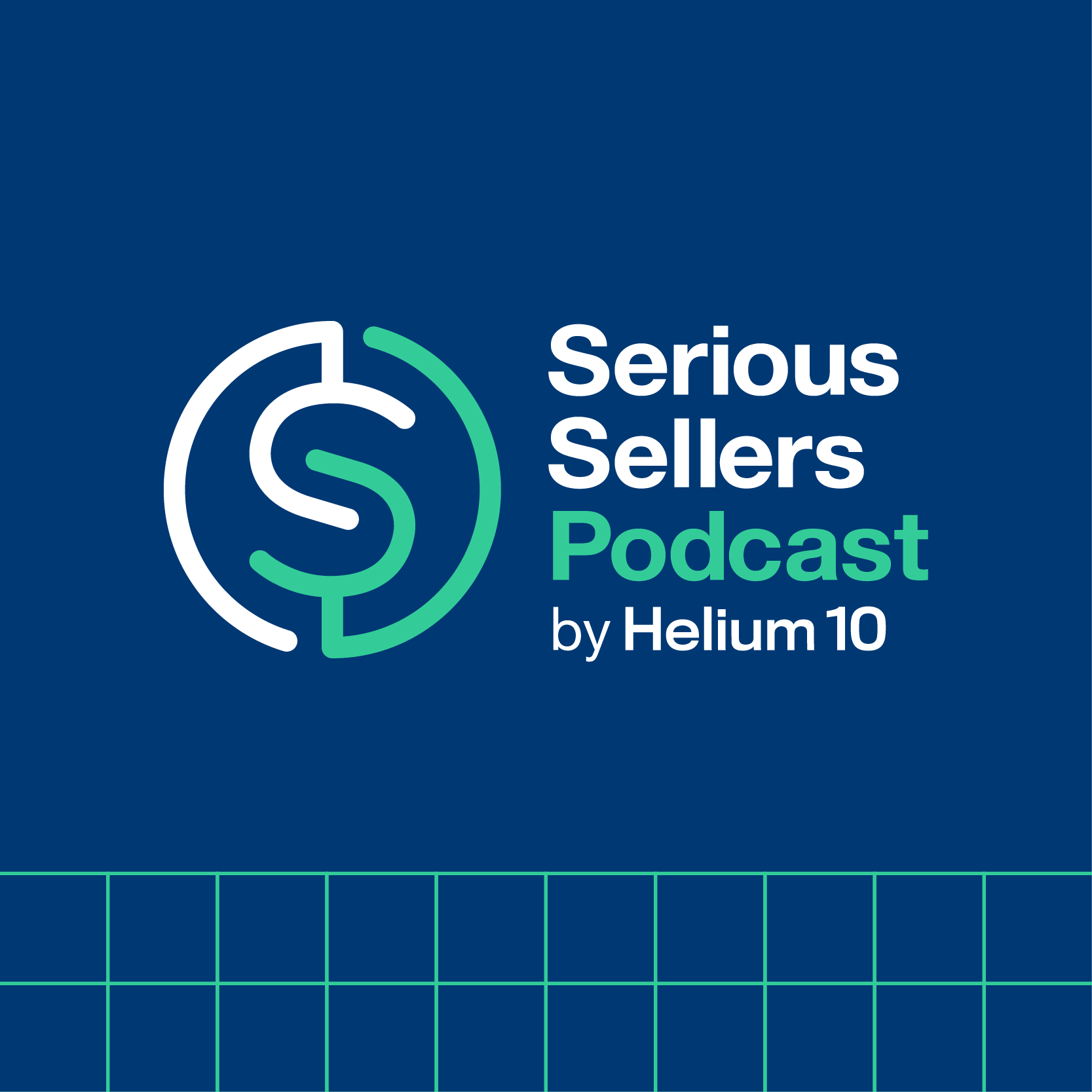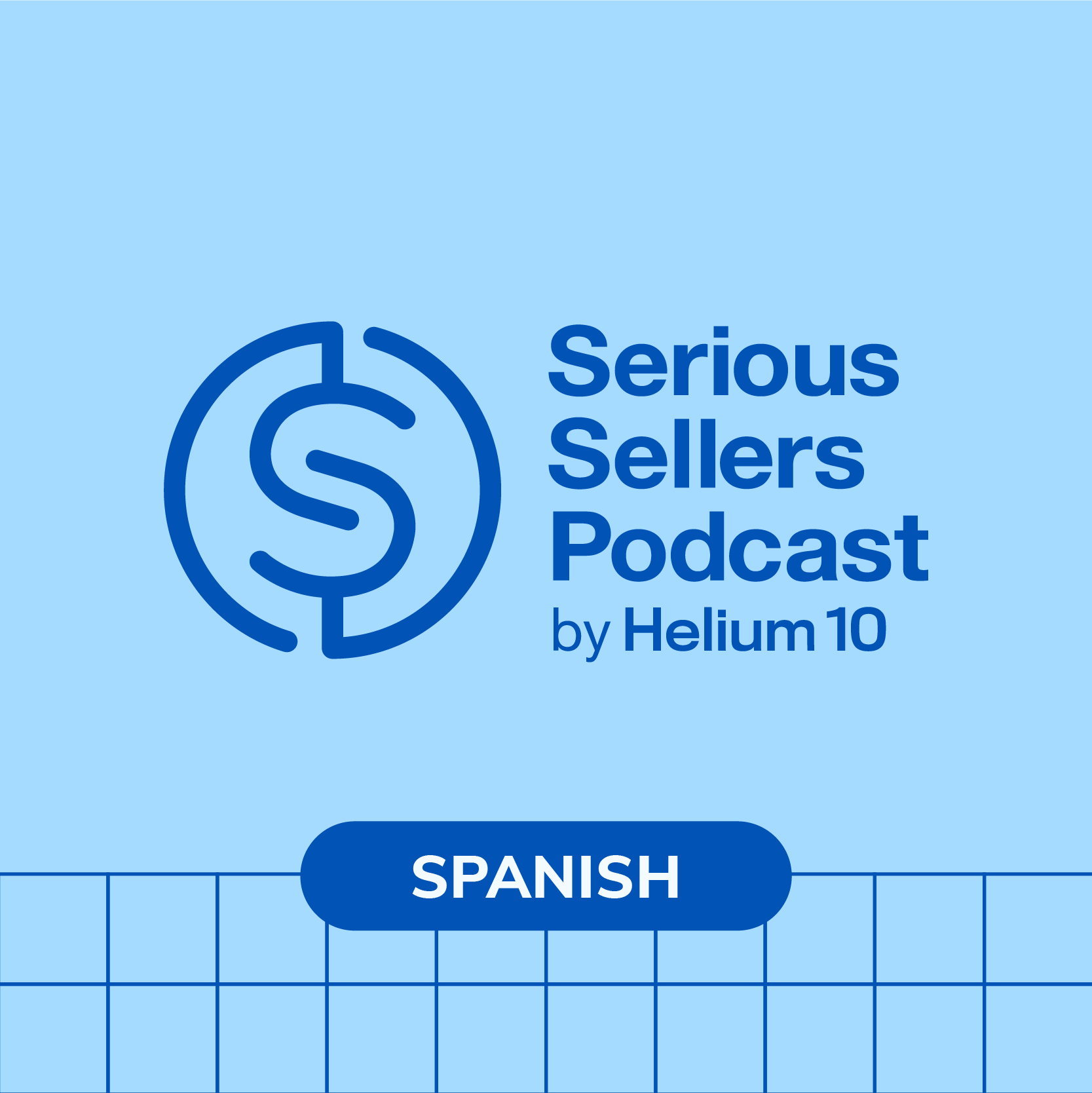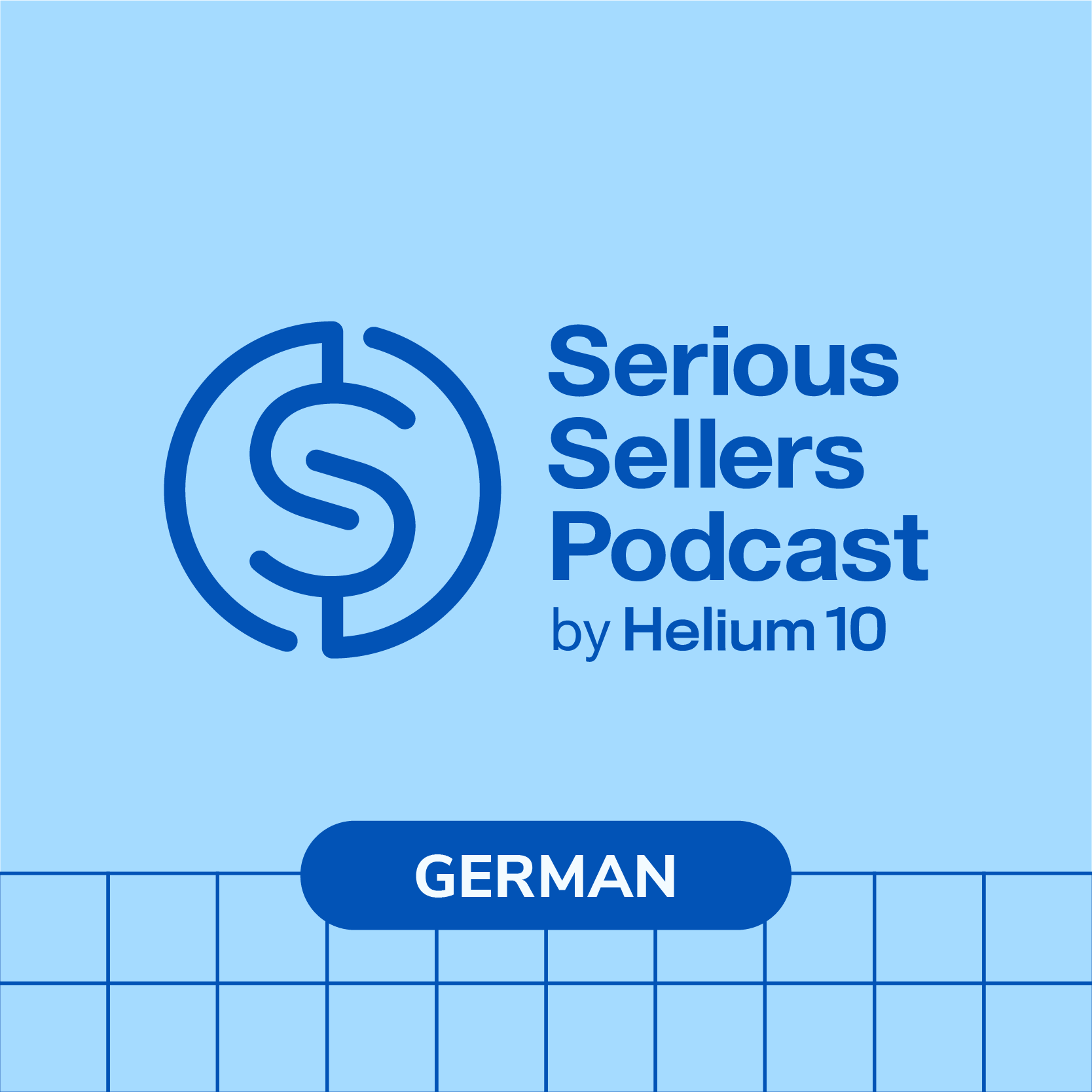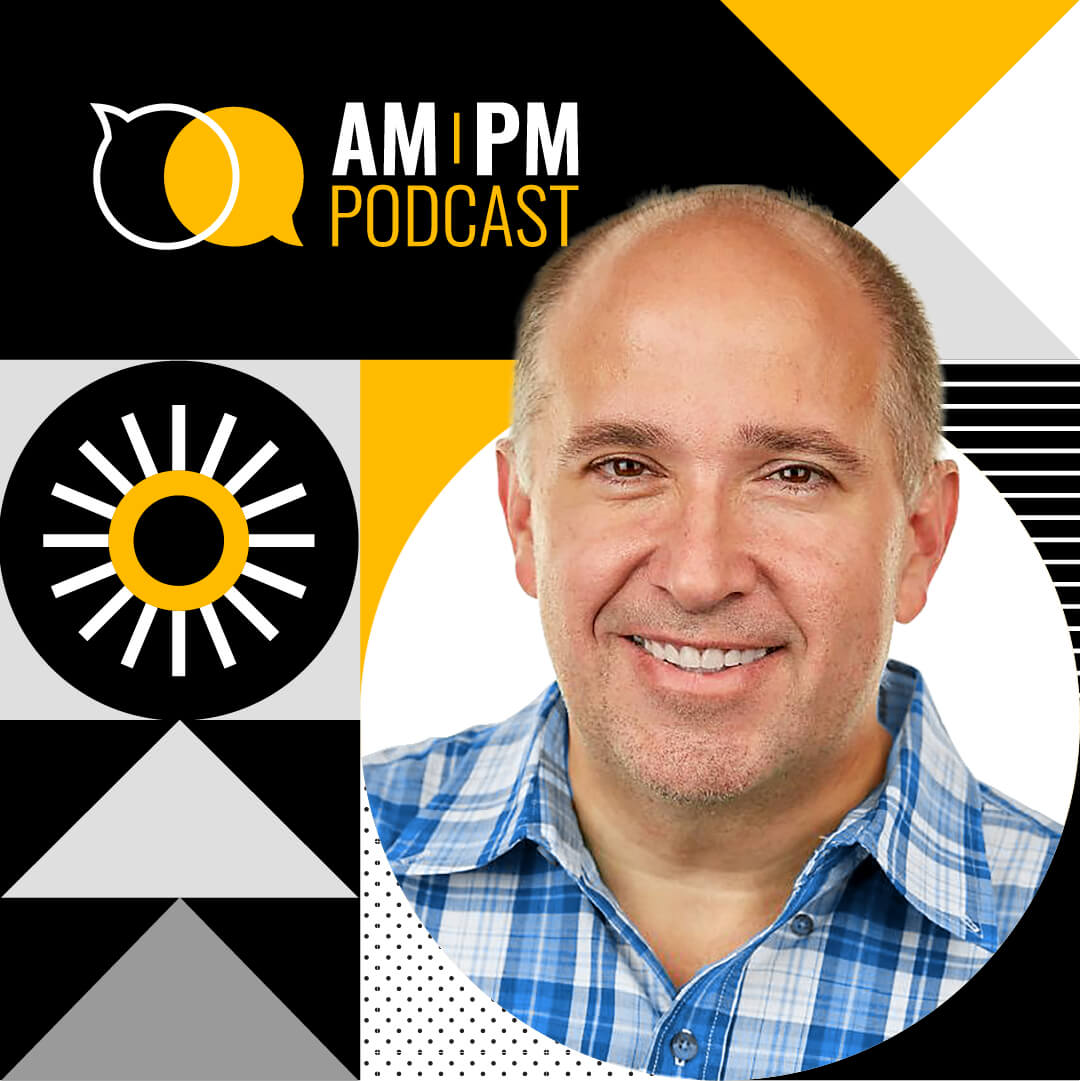Weekly Buzz 4/4/25: Big Tariff Trouble?!

We’re back with another episode of the Weekly Buzz with Helium 10’s VP of Education and Strategy, Bradley Sutton. Every week, we cover the latest breaking news in the Amazon, Walmart, and E-commerce space, talk about Helium 10’s newest features, and provide a training tip for the week for serious sellers of any level.
Can a new set of tariffs reshape the landscape for Amazon sellers, potentially leveling the playing field and offering unexpected opportunities? Join us as we explore this complex and rapidly evolving situation, where countries like China, the EU, and Vietnam are hit with varying rates, and the de minimis loophole is no more. As sellers grapple with these changes, we highlight the need for strategic approaches to maintain profitability, such as re-evaluating HS codes and collaborating closely with suppliers and freight forwarders. Listen in to hear insights from our community, who are finding ways to stay resilient amidst the upheaval.
Let’s break down how these tariffs are impacting product pricing and profit margins, using real-world scenarios to illuminate the path forward. From a $10 item to a $25 item, we reveal the calculations needed to keep your business thriving despite increased production costs. The message is one of optimism and adaptability—while the road may be bumpy, it’s not the end. Embrace this opportunity to reflect, adjust, and strategize, ensuring your business not only survives but thrives in these challenging economic times. Tune in and become part of our community navigating this journey together.
In this episode of the Weekly Buzz by Helium 10, Bradley covers:
- 00:00 – New Tariffs’ Impact on Amazon and E-commerce Sellers
- 04:36 – Navigating Tariffs as Amazon Sellers
- 08:07 – Navigating Tariff Impact on Profitability
- 12:48 – Maximizing Cost Savings in International Trade
- 19:51 – Global Tariff Impact and Adaptation
Transcript
Bradley Sutton:
The new tariffs announced this week have Amazon sellers up in arms. I’m going to show you some numbers on why it might not be as bad as you think and things that you can do to keep your profitability and avoid issues on Amazon. How cool is that? Pretty cool, I think. Hello, everybody, and welcome to another episode of the Serious Sellers podcast by Helium 10. I’m your host, Bradley Sutton, and this is the show that is our Helium 10 Weekly Buzz, a special edition. As a matter of fact, we already had our Weekly Buzz this week, but we are just coming almost live here with something else because for the first time in a while, there’s something that has the Amazon world kind of up in arms right and everybody’s worried about this one thing. And so when that happens sometimes we’ll go ahead and do two weekly buzz in one week to make sure that you know you guys know what’s going on and, like, maybe take away some fears if, if some might not be warranted, or verify some things. That would help you guys clarify what is happening. And so in this weekly buzz, we are going to be talking about the new tariffs announced and what does it mean? What are people saying? What are people going to do? How can you protect yourself, things like that? So first of all, let’s just talk about some things that were announced, and let me just actually start with one thing that I don’t hear too many people talking about, but it kind of went under the radar but should make Amazon sellers very happy. You guys remember in the weekly buzz a while back, we talked about how the de minimis law was finally taken away, but then it was put back just a few days later. That’s that loophole that Shein and Temu and Amazon wholesalers can use, where they can ship stuff under $800 to directly to US customers and bypass taxes and tariffs and things like that. It just goes directly. That’s how people can sell stuff for like $6 on Temu shipped from China and even with the shipping and everything, they can still make a profit. Well, that’s been gone for like the or the taking away has not been there for like a couple of months already. So that means the business as usual, right For Temu and Shein and Amazon wholesalers. But take a look at this on WilmerHale.com Part of this announcement here. This on WilmerHale.com part of this announcement here. It says on April 2nd 2025, president Donald Trump issued an executive order imposing a 10% baseline reciprocal tariff so we’re going to talk about that later and an additional reciprocal tariff on 57 countries. But here it is. The second point here says President Trump also issued a second executive order eliminating de minimis for all low value imports from China and Hong Kong, effective May 2nd. So that is about one month from now, and then de minimis will go away for the rest of the world at a later date.
Bradley Sutton:
All right, so two things here, you know. The number one is the new tariffs. We’re going to talk a little bit about that. It pretty much covers almost all countries out there. But the second point here is this de minimis. So first of all, it’s not all bad news. I mean, I don’t think there’s any Amazon sellers who are like oh man, I really love that de minimis who live outside of China. If you live in China, yeah, you’re probably like this sucks, you know, like I’m not sure how I can sell, but what about the tariff? So just you know, in case you guys haven’t been watching the news or anything, take a look at some of these stats here. It says seven of the US top 10 trading partners are among the 57 countries facing an additional reciprocal tariff 34% for China, which includes the baseline tariff and additional tariff. 20% for EU. 46% for Vietnam 46%, you know. So those of you like, oh, I’ll just go get my products made in Vietnam instead of China, well, nope, that’s not something that’s going to really save you money. 32% for Taiwan. 27% for India Again, that’s a very popular place in manufactured products in India. 26% for South Korea. So that’s what was kind of announced.
Bradley Sutton:
Ok, and this whole thing is always in flux. Whenever there’s big like trade wars and stuff. And guys, I’m no financial expert, I’m no legal expert, you know. I don’t know what kind of disclaimer I could say like, hey, please don’t take this as financial advice or whatever. I’m a layman when it comes to this. But I also read news, you know, and things like this have have happened, similar ones and, and these things are flux, are in flux a lot. Right, like by the time you know I’m just recording this a few hours before it goes live, who knows, by the time you guys are hearing this, something could have drastically changed and one of the countries like all right, USA will do whatever you want and please take away our tariffs. And then president Trump says okay, you’re good. Or president Trump says, you know, just kidding, this was my, you know, one day, late April fools, let’s go ahead and take off this. There’s who knows what’s, what’s going to happen. But let’s just say, you know, things are as is for the next few weeks, or something that you know.
Bradley Sutton:
The question is rightfully, how do we, as Amazon sellers, you know, deal with this? How is this going to affect things? And so let me give you guys, you know, just some, some different numbers and talk a little bit about what I plan on doing, um, what I see in Facebook groups, uh, our healing and Facebook groups, what other members are doing, uh, et cetera. All right, so, first of all, is this like you know, like you you might see the word um or the, the figure, 10% tariff, 30%. You know, 34 plus 10, you know that equals more than 50% plus another 10%. You know it’s over 50%. And you might be like, oh, my goodness, my product is $30. Does that mean now I pretty much have to raise my price to, uh, what’s like 50% of their $15. And so it’s like what? $45. Do I have to raise my price to $45? I have to raise my price from 30 to $50. I’ll never be able to raise my price. That’s terrible. That’s not the case. I’m going to show you guys.
Bradley Sutton:
Another thing to keep in mind is this is something that affects all sellers equally. All right, the Chinese sellers. They’re going to have to pay this tariff too. They ship their stuff to Amazon. There’s no loophole to get around this. If they’re using FBA, they’re getting hit with the exact same tariffs. That you are All right. So it’s not like some disadvantage for US sellers, like the de minimis rule, disadvantage for US sellers, you know, because Americans can’t take. You know, unless you’re shipping from China, American and EU sellers, you know, can’t necessarily take advantage of that Right. So that one actually does disproportionately affect one group or the other. These tariffs is universal, anything coming to the country from these countries, everybody’s going to have to react accordingly.
Bradley Sutton:
So I saw a lot of sellers saying, oh, Chinese sellers aren’t raising their price right now. Well, first of all, it’s too early to say who’s raising their price and not, you know, like, nobody yet has been affected by this. Like, literally, if they ship their products already. You know the products that are in the FBA right now. You know it’s not like, oh, there’s some tariff on the inventory that’s already in FBA. No, it’s for new shipments. Matter of fact, I called some shipping companies in China and said hey, what about if there’s a shipment on the water right now and it was paid DDP, meaning you prepay everything to the door of Amazon or to your door Does this mean that there could be an extra bill that they’re going to get for the customs? And they are like hey, we honestly don’t know yet, but we talked to our you know, different forwarders and right now, no, because it was shipped already and it’s already almost there. You’re not going to have to pay it. That one I’m a little bit skeptical on, you know. I’m like are they just telling me what I want to hear to make me not worry? I would have thought that I would have to pay more. So that’s something I’m definitely going to keep my eye on, because I’ve got two shipments that I already paid for everything and it’s about to arrive.
Bradley Sutton:
I’m very curious Am I going to have to pay, like, extra money? No, China sellers are going to raise their price, because I don’t see anybody raising the price. No, we can’t. We can’t look at it that way. I mean, they’ve got probably a thousand units in Amazon already that they already paid, you know, like, so so this doesn’t affect existing inventory we can’t yet look at, uh, you know how many people are going to, uh, you know, change their price to kind of like have an idea of what’s happening a month or two from now. With that being said, what do some of these prices mean? And I just made a kind of like a rudimentary spreadsheet here, all right, so so here’s a little spreadsheet I just put out again. I’m no mathematician here. Uh, I was rounding up you know some of these things and hopefully my calculations are correct. If it’s not, you know, let me know in the comments below.
Bradley Sutton:
But this is just a general idea of how to kind of like visualize what these tariffs might be. Let’s just pretend you had a product that you were selling on Amazon for $10 retail price. All right, let’s say your cost to manufacture it in China or some other country is $1. All right, let’s say that all in all, your fees for Amazon is $6 and 50 cents. All right, you know, that’s like the shipping and whatever. Whatever you know your, your PPC, whatever, let’s just. You know that’s like the shipping and whatever. Whatever you know, your PPC, whatever. Let’s just you know devil’s advocate here. Let’s just say it costs $6.50. That means your profit is $2.50. Okay, $2.50 for each unit that you sell, which means you’ve got a margin, profit margin of 25%. All right, so this is kind of like a standard. All right.
Bradley Sutton:
Now let’s just say that there was a tariff for 10% that was put on this country and then another new tariff for another 30%. All right, I don’t know of any countries with this exact numbers here, but it might be similar to the one for China or others. But this is just a way to look at it. So that doesn’t mean that you have got to raise your price 40%, like, hey, your product price was $10. You have got to raise your price 40%, like, hey, your product price was $10. And now you’ve got to put it at $14 in order to stay profitable. No, what it basically means it’s based on the product cost, right? So let’s just say that if it was $1 before, potentially with these new tariffs, your new product cost would be a dollar 40, right, it’s based on. You know it’s 10% plus four would be $1.40, right, it’s based on, you know it’s 10% plus 30%, $1.40. Now, if the product price is still $10, let’s say you don’t change your price at all.
Bradley Sutton:
What does your profit margin go to? It goes from $2.50 to $2.10 because it increased by 40 cents. Right, your cost of goods sold okay. So your new margin, your profit margin, is now 21% instead of 25. What would you have to do in order to get back to 25% profit margin? If you want it to raise the price, you’ve got to change the price to $10 and 50 cents. So you would only need to raise the price by 50 cents in order to raise your profit margin from 21% back to 25%. Again, this is very rudimentary. You know there’s much more advanced ways of accounting to calculate this out, but this just gives you a general idea. It’s definitely different than I hear some people saying oh, I have to raise my product cost or my price 40%. No, you don’t have to. 50 cents is not much. Is this the end of the world? To raise a product price $10 to $10.50? Might not be, especially if everybody else is having to do it. Right Again, like this is. This is something that’s affecting everybody, all right. And if you don’t, if you don’t raise your prices, well, how much less profit are you having per unit. Let’s say you don’t even raise, raise your prices. Well, you just got 40 cents less profit, right, per unit. Now this is different as the product price increases.
Bradley Sutton:
So here’s another example. Right, let’s say your product price. You got a product like a coffin shelf. That’s $25, not $10, $25. Let’s just pretend your product cost is five, not $1, but $5. All right, if your fees, your Amazon fees, were $13 and 70 cents, that means your profit margin is $6 and 30 cents. 25% profit margin, $6 and 30 cents per unit, that’s how much you make under the old way, without tariffs. But now, again, 10% profit or a 10% tariff is is incorporated. Now, all of a sudden, you get a 30%, uh, another additional tariff. Right? Well, that makes your new product costs seven dollars instead of five. What happens if you do not increase prices at all? Well, instead of making six dollars and 30 cents per unit, you’re only got a 17% margin. So not like a life, you know, like life altering thing to have 8% less margins. That’s a lot better than having 40% less margins, like some might have been erroneously calculated. So what would you have to raise your price of your $25 product in order to keep your old 25% margin, it would need to go to $27.50. So again, is raising the price from $25 to $27.50 the end of the world? You know, for some hopefully not For others maybe that’s not great, but again, this is not even at this astronomical 40% tariff. It’s not like you are having to increase your, your, your prices by some astronomical amount. Ok, so again, that’s just one way to look at it, to kind of put in perspective what might happen, what you might have to do if you wanted to keep the same profit margins that you had.
Bradley Sutton:
Now the question is like what are some things that you can do? One thing is talk to your supplier, talk to the freight forwarder, talk to your custom clearance person. Take a look at all your, like your HS codes. A lot of times there are some HS codes where your base tariff maybe you could actually save some money because it qualifies for a different HS code. I think it’s called HS code. Whatever the code is for you know how that has that decimal place in and that like classifies what kind of product you have. There are some that maybe you’re like hey, I was in a wood shelf, you know, like a coffin shelf, but if I just changed the HS code to a wood table top storage. I’m just making stuff up, it’s, you’re not lying about it. You can’t like lie and say, oh yeah, this is a. This coffin shelf is now electronic or something. But if it qualifies to be this other HS code, that HS code might have lower quality base fees, all right. Well, that can wipe off some of this tariff. That’s just one thing.
Bradley Sutton:
You know, like negotiating with your supplier, can you get discounts if you pay in the local currency? Like maybe you’ve got some good? You know like currency conversion here, and ask your supplier hey, what if I pay in Chinese RMB or rupees? You know, in India I think that’s the, I think that’s the currency that I’m not sure Like, hey, you know, can I save a 1% here, 2%, 3%, 4% here? You know, because maybe if they’re quoting you in dollars, they might be building in like a buffer for them because of the exchange rate fluctuations. So so that could be a way to to to save, save a percentage point here or there. Obviously, as we just talked about raising prices down the road or now could be something that is done, some people might raise prices now, little by little. Why do you want to raise price little by little. If you were going to raise the price $2 to $3, you got to be careful. I would not go from $10 to $13. Well, first of all, I don’t see why you would need to want to do that. As I said, like, even with 40% tariffs, you might only need to raise your price 50 cents, 60 cents to make your same profit.
Bradley Sutton:
But for whatever reason, let’s just say that’s not the case. Or you’re getting your products from some country that has a ridiculously high tariff. You don’t want to raise your price by 20%, like go from 10 to 12. Why? Because a lot of times what might happen is buy box suppression. If Amazon thinks you’re price gouging, amazon will take away your buy box. If you increase it, you know too much. All right, by the way, if you want to make sure that that’s not happening. Sometimes it doesn’t happen immediately. Sometimes Amazon, like looks at your price increase and and says oh yeah, this is something that we think doesn’t merit buy box. It happens later on, right? So just FYI, most of you guys have helium 10, platinum plan, all plans. Make sure you have alerts active on all your products, whether you’re increasing prices or not. Always have alerts on. Turn on your alert for buy box. All right, buy box notification If you lose the buy box. It’s not just about losing the buy box to another seller. If the buy box disappears, hit the settings and make sure that you have the alert on so that you can get a text message or an email as soon as that happens. All right, so that’ll help protect you for that. But yeah, so raising price is definitely an option.
Bradley Sutton:
I made this poll in the Helium 10 Facebook group. I’m like, hey, what are you guys going to do about these tariffs? What’s your gut reaction? And take a look at this. We’ve got 45% said you know what? I’m going to wait until I have to start paying the tariffs in order to raise prices. 25% said I’m immediately raising the prices. 10% says you know what? I’m not going to raise the price at all. It doesn’t change my cost too much. 10% said I’m going to start to look at other countries outside of China to manufacture. And then 5% said you know what? I might have to discontinue some low margin products in order to, because, like the, the tariffs just make it impossible to sell. So you know, a lot of people have different strategies that they are going to be using.
Bradley Sutton:
Now, like I said, some people are worried that, hey, the Chinese sellers or my competitors aren’t raising their prices. Well, if you’re just like waiting to see what they they’re going to do, and maybe you don’t want to raise your prices and sell the competitors, that’s actually not a bad idea. Like, if you’re the only one who raises their price, that’s probably going to kill your conversion rates, right? But one thing you can do is, hey, make sure you have, like, your competitor alerts, turn on that’s in your insights dashboard. And so, again, if you’re in your in your insights dashboard, if you’ve got a helium 10, a diamond account, make sure to go in and first have your competitors specified, all right. So, like, I’ve got this bat bath mat right here and I put as my competitors the other bat bath mats, okay, and we are going to be checking Are they going to, are they running coupons, is their price going to change?
Bradley Sutton:
And so you’re going to want to go into your insights and then create a new insight that is based on your competitors and then make sure that it’s activated. If a competitor changes price or adds a coupon, you get an alert for that. And then, hey, as soon as they raise their price, then then then you can too. Or maybe you’re like, maybe they’re waiting for me to raise my price and then you’re okay with being the first one, but you would kind of want to see after a day or two, are they? Do they raise their price? We’ll turn that alert on in your insights dashboard and you’ll be able to see if they add a coupon or change their price.
Bradley Sutton:
So, anyways, guys, I know this is kind of maybe jarring, regardless of what I talk about here, like what’s going on, and maybe have you worried, but but I hope I was able to illustrate a little bit that you know. This is not, when you see numbers like 40 percent, 54 percent, 60 percent, it does not mean that in order to be profitable, you’ve got to raise your price by 60% Absolutely not. As a matter of fact, you should not never, under any circumstance, raise your price any more than like even 20% at once, because, again, like I said, you might lose the buy box. So I hope some of this put it in perspective. But it is valid to be concerned about what is going on and if your costs are going up, but there’s some things that you can negotiate to help mitigate, you know, maybe a few percent here or there. Hopefully, at the end of the day, if you do raise your price, yeah, you know what, raise your price 50 cents a dollar and keep those profit margins. But the key is making sure you’re you’re not going against Amazon’s policies by raising the price too fast, or Amazon punishes you by taking away the buy box. So you know, keep up to date on what’s going on with your buy box. Keep up to date with your competitors, what they’re doing, and let’s talk about this in a week or two. Let’s see what you guys are going to do. And who knows, you know, maybe nobody’s going to have to raise their price for another month or two.
Bradley Sutton:
If this is still going on, nobody knows what’s going to happen with these tariffs or what the culmination who knows? The tariffs might even go up even more temporarily. But again, guys, this is something. The key, one of the key things is that affects all sellers equally, all right, all sellers from who make their products in one country. You know, obviously the tariff for India is a little bit different than Vietnam, is a little bit different than China, but it’s not like one country has an advantage over the others before China had the worst tariffs and then, so that’s why a lot of people were going to India and Vietnam. But now, as you can see, at least for now, a lot of the tariffs are hitting these countries pretty hard, regardless of what country it is. So that, what does that mean? That means everybody’s going to have to raise their price. So keep your chin up, guys. Things are not. It’s not the end of the world. I’m sure things will work themselves out, or I hope things will work themselves out eventually. Keep up the good work with your selling, and we’ll see you, guys, in the next episode.
Enjoy this episode? Be sure to check out our previous episodes for even more content to propel you to Amazon FBA Seller success! And don’t forget to “Like” our Facebook page and subscribe to the podcast on iTunes, Spotify, or wherever you listen to our podcast.
Get snippets from all episodes by following us on Instagram at @SeriousSellersPodcast
Want to absolutely start crushing it on Amazon? Here are few carefully curated resources to get you started:
- Freedom Ticket: Taught by Amazon thought leader Kevin King, get A-Z Amazon strategies and techniques for establishing and solidifying your business.
- Helium 10: 30+ software tools to boost your entire sales pipeline from product research to customer communication and Amazon refund automation. Make running a successful Amazon or Walmart business easier with better data and insights. See what our customers have to say.
- Helium 10 Chrome Extension: Verify your Amazon product idea and validate how lucrative it can be with over a dozen data metrics and profitability estimation.
- SellerTrademarks.com: Trademarks are vital for protecting your Amazon brand from hijackers, and sellertrademarks.com provides a streamlined process for helping you get one.
Achieve More Results in Less Time
Accelerate the Growth of Your Business, Brand or Agency
Maximize your results and drive success faster with Helium 10’s full suite of Amazon and Walmart solutions.








